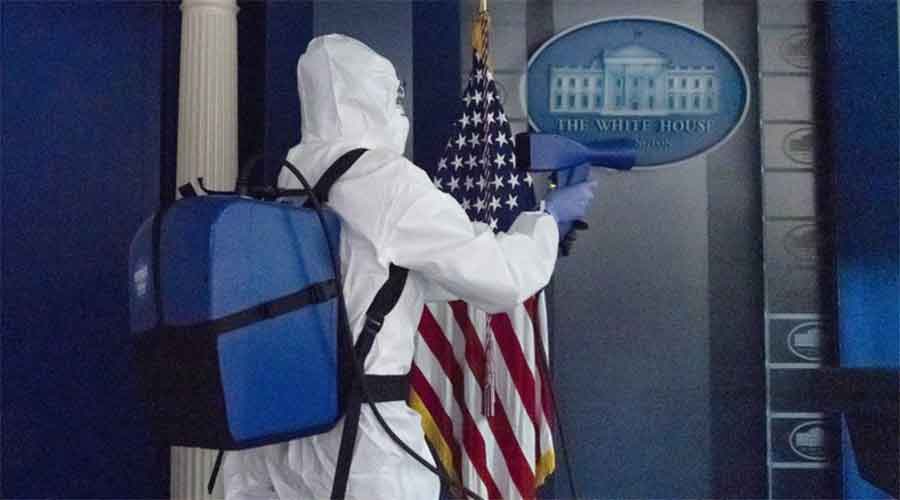The White House that President Donald Trump woke up in on Tuesday morning was in full-blown chaos, even by the standards of the havoc of the Trump era.
Aides said the President’s voice was stronger after his return from the hospital on Monday night, but at times he still sounded as if he was trying to catch air. The West Wing was mostly empty, cleared of advisers who were out sick with the coronavirus themselves or told to work from home rather than in the capital’s most famous virus hot spot. Staff members in the White House residence were in full personal protective equipment, including yellow gowns, surgical masks and disposable protective eye covers.
Four more White House officials tested positive, including Stephen Miller, a top adviser to Trump, bringing to 14 the number of people carrying the virus at the White House or in the President’s close circle. Trump, diagnosed with Covid-19 last week, was still livid at his chief of staff, Mark Meadows, whose effort on Saturday to tamp down the rosy portrait of the President’s condition given to reporters by his chief doctor was caught on camera. Other officials were angry with Meadows for not even trying to control the President.
Some aides tried to project confidence. “We feel comfortable working here, those of us who are still here,” Alyssa Farah, the White House communications director, said in an interview on Fox News. But many saw the situation as spiralling out of control. The pandemic that Trump had treated cavalierly for months seemed to have locked its grip on the White House. West Wing aides, shaken by polls showing the President badly trailing Joseph R. Biden Jr., worried that they were living through the final days of the Trump administration.
Some White House staff members wondered whether Trump’s behaviour was spurred by a cocktail of drugs he has been taking to treat the coronavirus, including dexamethasone, a steroid that can cause mood swings and can give a false level of energy and a sense of euphoria.
Aides said that Trump made calls from the White House on Tuesday and roamed the areas of the presidential residence that had been set up for him. Although he was described as itching to get back into the Oval Office and show that he was in charge, a potential live address to the nation was discussed but scrapped in favour of a planned taped one.
Prominent supporters of the administration said Trump should have stayed at the hospital until he was no longer infectious or should remain confined to his residence. “When a boss comes down with Covid, whether that boss is the President, a CEO, a principal at a school, a union foreman on a shop floor,... and the boss shows up for work, it sends a very worrisome message to all of those around the boss,” said Ari Fleischer, a former press secretary to President George W. Bush.
Still unknown was the exact status of the President’s health. Dr Sean P. Conley, the White House physician, said on Tuesday that the President “reports no symptoms” of the virus and that his vital signs were stable, but no one at the White House would say what the “expected findings” were on Trump’s chest X-ray that Dr Conley had mentioned over the weekend.
As the day progressed on Tuesday, parts of the White House resembled a hazard zone.
Workers dressed in head-to-toe protective suits sanitised common spaces in the West Wing, and staff members were told that the White House residence had hired a “well-being” consultant whom they could speak with anonymously, specifically to focus on mental health concerns.
Kayleigh McEnany, the White House press secretary who tested positive for the virus on Monday, appeared on television from her home. Hope Hicks, Trump’s close adviser who has also tested positive, had been trying to help with messaging for the videos the President shot at Walter Reed and the remarks on the virus he wanted to make upon his return.
The sentiment when Trump returned to the White House and removed his mask for cameras, according to one aide, was that “it’s his house.”
New York Times News Service











